
A space telescope is a telescope in outer space used to observe astronomical objects. Suggested by Lyman Spitzer in 1946, the first operational telescopes were the American Orbiting Astronomical Observatory, OAO-2 launched in 1968, and the Soviet Orion 1 ultraviolet telescope aboard space station Salyut 1 in 1971. Space telescopes avoid several problems caused by the atmosphere, including the absorption or scattering of certain wavelengths of light, obstruction by clouds, and distortions due to atmospheric refraction such as twinkling. Space telescopes can also observe dim objects during the daytime, and they avoid light pollution which ground-based observatories encounter. They are divided into two types: Satellites which map the entire sky, and satellites which focus on selected astronomical objects or parts of the sky and beyond. Space telescopes are distinct from Earth imaging satellites, which point toward Earth for satellite imaging, applied for weather analysis, espionage, and other types of information gathering.
Infrared astronomy is a sub-discipline of astronomy which specializes in the observation and analysis of astronomical objects using infrared (IR) radiation. The wavelength of infrared light ranges from 0.75 to 300 micrometers, and falls in between visible radiation, which ranges from 380 to 750 nanometers, and submillimeter waves.
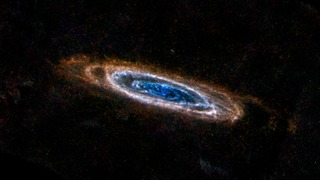
Far-infrared astronomy is the branch of astronomy and astrophysics that deals with objects visible in far-infrared radiation.
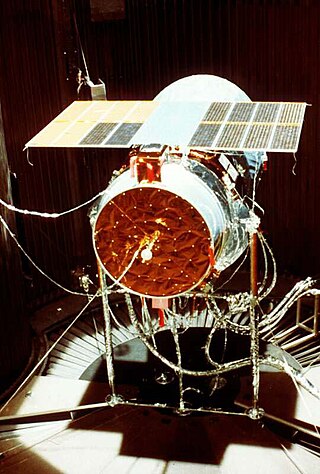
The Infrared Astronomical Satellite (IRAS) was the first space telescope to perform a survey of the entire night sky at infrared wavelengths. Launched on 25 January 1983, its mission lasted ten months. The telescope was a joint project of the United States (NASA), the Netherlands (NIVR), and the United Kingdom (SERC). Over 250,000 infrared sources were observed at 12, 25, 60, and 100 micrometer wavelengths.

The Spitzer Space Telescope, formerly the Space Infrared Telescope Facility (SIRTF), is an infrared space telescope launched in 2003, that was deactivated when operations ended on 30 January 2020. Spitzer was the third space telescope dedicated to infrared astronomy, following IRAS (1983) and ISO (1995–1998). It was the first spacecraft to use an Earth-trailing orbit, later used by the Kepler planet-finder.

The Eagle Nebula is a young open cluster of stars in the constellation Serpens, discovered by Jean-Philippe de Cheseaux in 1745–46. Both the "Eagle" and the "Star Queen" refer to visual impressions of the dark silhouette near the center of the nebula, an area made famous as the "Pillars of Creation" imaged by the Hubble Space Telescope. The nebula contains several active star-forming gas and dust regions, including the aforementioned Pillars of Creation. The Eagle Nebula lies in the Sagittarius Arm of the Milky Way.

NASA's series of Great Observatories satellites are four large, powerful space-based astronomical telescopes launched between 1990 and 2003. They were built with different technology to examine specific wavelength/energy regions of the electromagnetic spectrum: gamma rays, X-rays, visible and ultraviolet light, and infrared light.
Ed Wasser is an American actor, best known for his portrayal of Mr. Morden in Babylon 5.
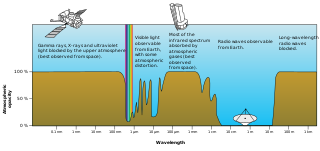
Visible-light astronomy encompasses a wide variety of astronomical observation via telescopes that are sensitive in the range of visible light. Visible-light astronomy is part of optical astronomy, and differs from astronomies based on invisible types of light in the electromagnetic radiation spectrum, such as radio waves, infrared waves, ultraviolet waves, X-ray waves and gamma-ray waves. Visible light ranges from 380 to 750 nanometers in wavelength.

The Infrared Processing and Analysis Center (IPAC) provides science operations, data management, data archives and community support for astronomy and planetary science missions. IPAC has a historical emphasis on infrared-submillimeter astronomy and exoplanet science. IPAC has supported NASA, NSF and privately funded projects and missions. It is located on the campus of the California Institute of Technology in Pasadena, California.
Doris Daou is a Lebanese-born Canadian-American astronomer who was formerly the Director for Education and Public Outreach of the NASA Lunar Science Institute and the associate director of the NASA Solar System Exploration Research Virtual Institute (SSERVI), and is currently the program contact for NASA's "Small Innovative Missions for Planetary Exploration (SIMPLEx)".

An infrared telescope is a telescope that uses infrared light to detect celestial bodies. Infrared light is one of several types of radiation present in the electromagnetic spectrum.

Michelle Lynn Thaller is an American astronomer and research scientist. Thaller is the assistant director for Science Communication at NASA's Goddard Space Flight Center.
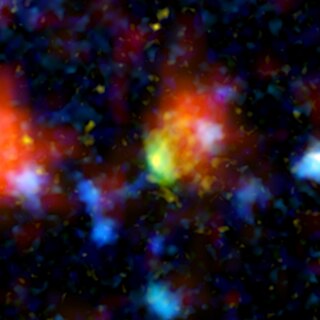
The Baby Boom Galaxy is a starburst galaxy located about 12.477 billion light years away. Discovered by NASA's Spitzer Science Center at the California Institute of Technology, the galaxy is the record holder for the brightest starburst galaxy in the very distant universe, with brightness being a measure of its extreme star-formation rate. The Baby Boom Galaxy has been nicknamed "the extreme stellar machine" because it is seen producing stars at a rate of up to 4,000 per year. The Milky Way galaxy in which Earth resides turns out an average of just 10 stars per year.
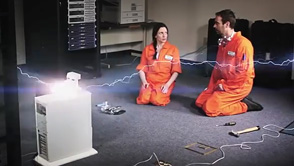
IRrelevant Astronomy is a web series produced by NASA's Spitzer Space Telescope. Each episode explains a general science concept or reveals science news relevant to Spitzer. The "IR" in the title stands for "infrared", making the title refer to "infrared-relevant astronomy." The first episode launched on January 15, 2008, on the Spitzer Space Telescope website.
Michael D. Bicay is an astronomer and the Director of Science at the NASA Ames Research Center.
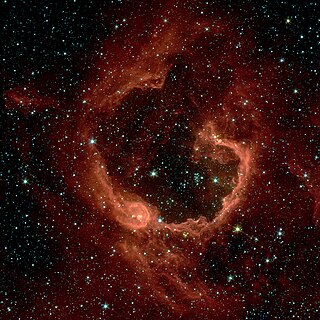
RCW 79 is an emission nebula in the constellation Centaurus.
OGLE-2014-BLG-0124Lb is one of the farthest known planets in the universe. It is approximately 13,000 light years away, located near the center of the galaxy. The planet was discovered using a technique called microlensing. In this case it took 150 days. Two telescopes are used to detect the planet and the time difference between identification by each telescope is used to calculate the distance to the planet. This also contributes to determining the mass of the planet which is about half of Jupiter's. The planet orbits a star with a mass of 0.7 solar masses and is 3.1 AUs from it.

The Infrared Array Camera (IRAC) was an infrared camera system on the Spitzer Space Telescope which operated in the mid-infrared spectrum. It was composed of four detectors that operated simultaneously at different wavelengths; all four were in use until 2009 May 15 when the Spitzer cryostat ran out of liquid helium. After then, the spacecraft operated in a warm extended mission, in which two of the four detectors remained functional, until the Spitzer mission was terminated on 2020 January 30.
Luisa Rebull is an American astrophysicist and a senior research scientist at IPAC-Caltech. In addition, she is the director of the NASA/IPAC Teacher Archive Research Program (NITARP), formerly the Spitzer Space Telescope Program for Teachers and Students, and a communications and testing lead at the Infrared Science Archive (IRSA).













